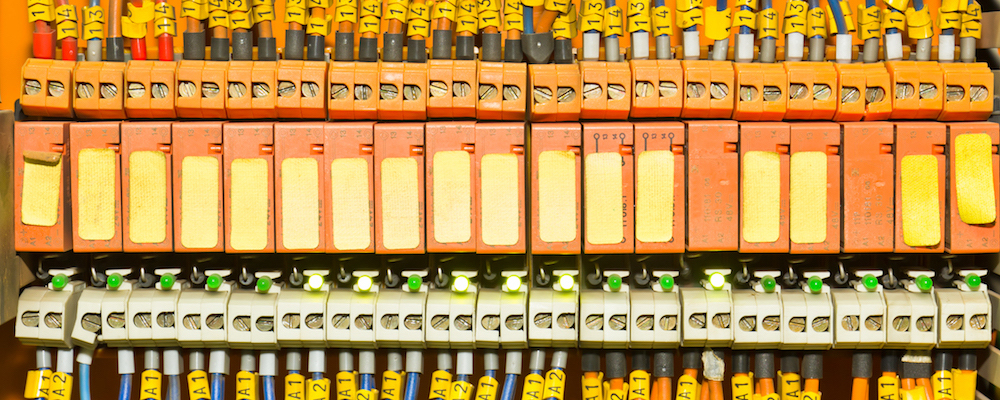How to Use a Terminal Block

In an earlier blog, we answered the question, “What is a terminal block?” Below, we’ll describe how to use a terminal block, whether it’s a screw-in or plug-in terminal block. If you need to organize connecting wires, there are a few important steps you’ll need to take to properly set up a terminal block. However, the process is fairly simple, especially if you’re working with plug-in connectors. Below, we’ll walk you through how to use a terminal block, as well as the different terminal block types. If you still need help with the terminal block connector types, then reach out to our team today for help.
Determine Which Terminal Block Type You Need
Knowing which terminal block type you have can change what you need to do. Do you have a screw-in or a plug-in connection? Screw-in wires are secured inside the terminal block and are commonly used with equipment that doesn’t need high-voltage protection. Plug-in wires have a male connection at the end and are connected to a female port located on the terminal block, which creates a secure connection. You can find plug-in blocks in the fuse boxes of cars. Terminal blocks come in different shapes and sizes, so choose one that makes the most sense for where it’ll be installed. Below, you can find a list of the terminal block types, as well as the terminal block connector types.
- Ground Terminal Blocks
- Fused Connection Terminals
- Thermocouple Terminal Blocks
- I/O Blocks And Sensor Blocks
- Disconnect Terminal Blocks
- Power Distribution Blocks
Types of Connectors for Terminal Blocks
- Screw terminal: Screw clamp terminals are the most common type of connection method.
- Spring clamp
- Push-in terminal blocks
- Insulation Displacement Connector (IDC)
- Barrier terminal block
Secure the Connection
How to Connect Wire to Screw Terminal Block
- Make sure the equipment is turned off before proceeding.
- First, strip a small amount of the insulation off of the end of the wire (about one inch or so).
- Unscrew the terminal block’s retaining screw, then place the wire inside the hole.
- Tighten the screw, making sure that it’s secure. If the wire is loose, it’ll eventually melt the insulation.
How to Connect Wire to Plug-in Terminal Block
- Place the terminal block where you want it.
- Run the electrical wires to the terminal block, and connect the male terminals to the female ports.
- Make sure the connections are secure.
Test Terminal Block Connection
After you’ve secured the connections, it’s time to test the equipment to make sure everything’s working as it should. Additionally, you’ll also want to check the terminal block; make sure the connections aren’t hot to the touch and are still secure. Again, loose wires will damage the equipment and cause a fire hazard.
Learn More from Gateway Cable Company
Do you have other questions about how to use a terminal block connector? Contact us at Gateway Cable Company. We can not only answer your questions about terminal blocks, but we can also help you find the appropriate materials for your project or application. Interested in one of our products? Request a quote online!
